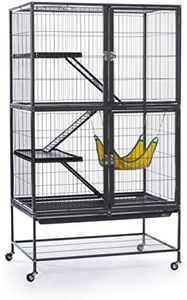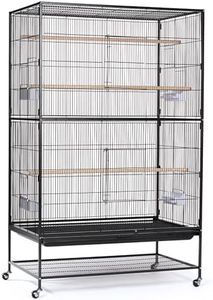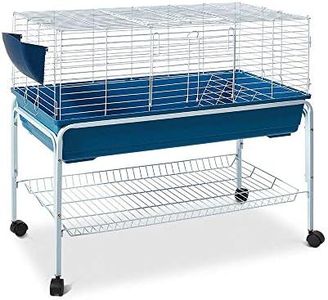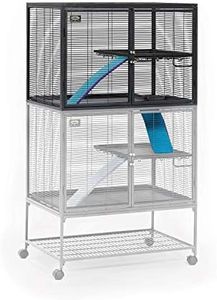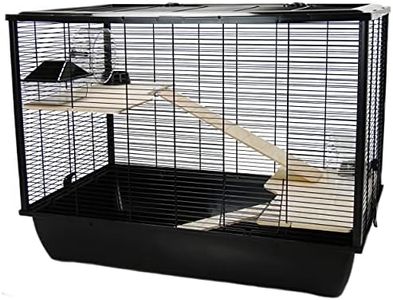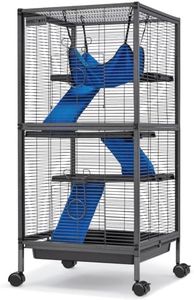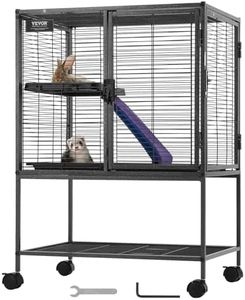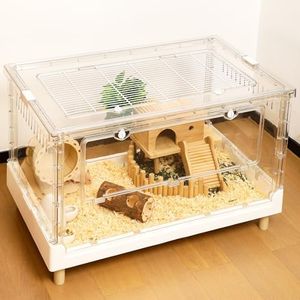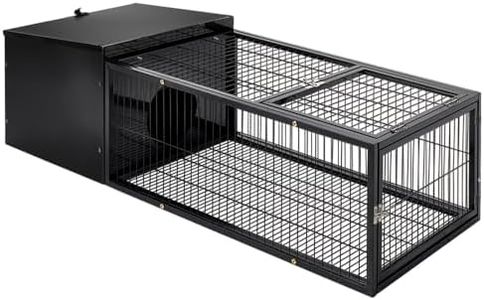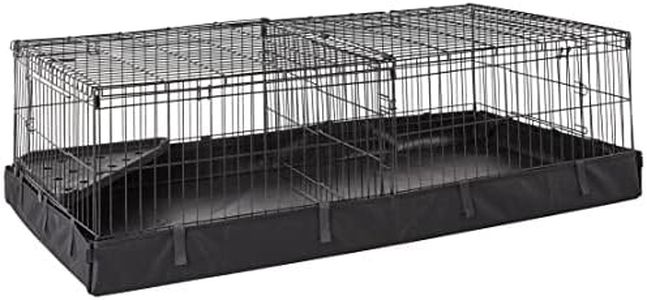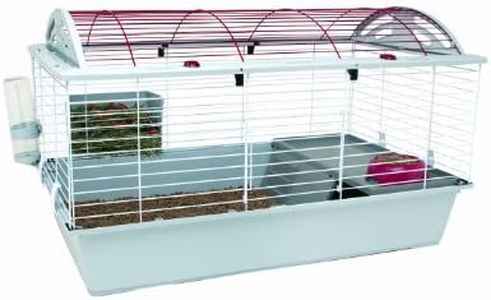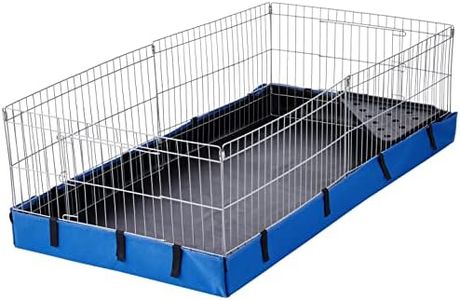We Use CookiesWe use cookies to enhance the security, performance,
functionality and for analytical and promotional activities. By continuing to browse this site you
are agreeing to our privacy policy
10 Best Rat Cages
From leading brands and best sellers available on the web.Buying Guide for the Best Rat Cages
Choosing the right rat cage is important because it affects your pets' health, happiness, and safety. A good cage provides enough space for movement and play, solid security to prevent escapes, and features that make it easy to clean and interact with your rats. Think of your cage as your rats’ home—it should be comfortable, stimulating, and safe. Before buying, imagine how your rats will live their daily lives in the cage: climbing, nesting, exploring, and socializing. Taking time to understand what matters most in a rat cage will help you make the best choice for your furry friends.Size and DimensionsSize and dimensions refer to the overall amount of space inside the cage. This is very important because rats are active and social animals that require lots of room to move, play, and interact. Cages are often labeled by the number of rats they can comfortably house, but checking length, width, and especially height is key. Small cages can be cramped and stressful for your pets, while larger and taller cages provide more opportunities for exercise and enrichment. For one or two rats, a minimum recommended cage size is often listed, but generally, bigger is always better. If you have a group or want to add more rats later, choose a cage with multiple levels and plenty of vertical space for climbing. Always look at the internal measurements; focus on choosing the largest and tallest cage your available space allows, keeping in mind how many rats you want to home.
Bar SpacingBar spacing is the distance between the metal bars of the cage. This matters because if the bars are too far apart, rats can squeeze out or get stuck, which is dangerous, especially for young or smaller rats. Cages usually have bar spacing between 0.5 to 1 inch. For baby or very small rats, choose bars close to 0.5 inch apart; for adult rats, up to 1 inch can work, but tighter spacing is almost always safer. If you are housing rats of different ages or sizes, pick a cage with the smallest bar spacing to prevent any escape or injury.
Material and Build QualityMaterial and build quality describe what the cage is made of and how sturdy it is. Most rat cages are made from metal bars with a plastic or metal base. Solid materials are essential because rats love to chew, and weak materials could be damaged or chewed through. Sturdy cages last longer and provide safer environments. Look for cages with powder-coated metal that resists rust and strong floors and shelves that won’t break under your rats’ activity. When choosing, consider how energetic your rats are and whether the cage will need to be moved often. A strong, well-built cage keeps your rats secure and saves you trouble in the long run.
Ease of CleaningEase of cleaning is how simple it is to remove waste and keep the cage fresh. Clean cages prevent bad smells and keep your rats healthy. Some cages have trays that slide out, removable shelves, or wide doors for easy access. Cages that are difficult to clean can make caring for your rats harder and lead to poor hygiene. When picking, look for features that allow you to reach every corner and quickly remove bedding or wash surfaces. If you know you'll be cleaning often, make easy access a top priority.
VentilationVentilation refers to how easily air flows in and out of the cage. Rats need fresh air to stay healthy, and poor ventilation can lead to respiratory problems. Wire cages have excellent ventilation, while plastic or glass cages can trap heat and moisture. Always choose a cage with mostly open bars and minimal solid panels. If your cage is in a warm room or you have several rats, prioritize maximum airflow.
Accessibility and DoorsAccessibility describes how easily you can reach into the cage for feeding, cleaning, or playing with your rats. Doors come in different sizes and locations—big front or top doors make access much easier. Small or poorly placed doors make cleaning harder and limit interaction. Think about your daily routine: if you want frequent interaction with your rats and easy maintenance, large, well-placed doors will be very helpful.
Expandability and CustomizationExpandability and customization mean whether the cage can be adapted or added onto. Some cages allow you to attach more levels, tunnels, or modules, or rearrange shelves and accessories. This can be important if you plan to add more rats or want to regularly change your rats’ environment to keep them engaged. If you love modifying the habitat or expect your pets’ needs to change, choose a cage with plenty of options for adjustment.
